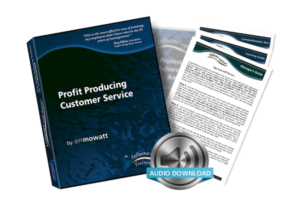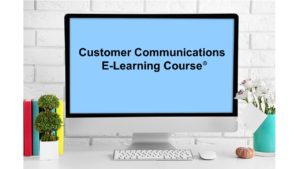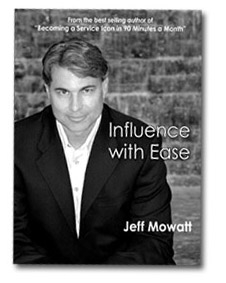Getting Your foot in the Door
7 steps to successful cold-calling
“The problem with my salespeople is they’re not cold calling enough!” That’s the concern I hear most often from sales managers and business owners when I speak at conventions on how to boost sales. Yet when I examine their cold calling strategies, I generally find they’re ill conceived.
Decision-makers in most organizations soon grow weary of the large number of salespeople phoning them. So if you’re not well trained when you cold call, I guarantee that you’ll face a lot of rejection.
On the other hand, when you’re professionally trained, cold calling is easy and tremendously profitable. Here are 7 steps to boost your cold calling success.
1. Create a targeted telephone list.
Have the list of people you’re going to contact within easy access so that you can make several calls without stopping. You can create your list through trade association directories, chambers of commerce and even your local library. You can also purchase lists from private companies listed under “mailing lists” in the yellow pages.
The best list is the referrals you obtain from current customers. Phone your satisfied clients and ask them how your product or service has been working for them. When they rave about your excellent service, ask “I wonder if you could give me some advice? (pause) I’d like to contact other people who might also be interested in this, is there anyone who you would suggest I contact?” That’s it. The key phrase is that you are asking for advice. People are so flattered to be asked for advice that in general, they’ll go out of their way to help.
While you are generating your list of calls, it’s also a good idea to have a contact management system to keep track of your calls and when you’ll follow up.
2. Set a goal and script your call.
Be clear about what the goal is for your call; be it to set up a meeting, send literature, or whatever. Then write a script to achieve that goal. That’s not to suggest that you’ll recite the entire conversation, just the first few key statements. Though this may seem artificial, most successful salespeople use a script to ensure that they consistently have a strong impact. On the telephone you don’t have time to make mistakes. Every word counts, so you must be prepared.
3. Locate the decision-maker.
In some cases, the decision-maker is not necessarily the person who does the buying. The organization may have a separate purchasing department for that purpose. So ask the switchboard operator or the receptionist to speak with, “The person who makes the decision regarding . . .”
When attempting to contact the key person, avoid leaving voice mail messages the first two times you call. Unfortunately, it’s relatively rare that people who have buying authority return unsolicited sales calls. If, after the third attempt, you still can’t reach them, then leave a voice mail message. But make sure you’ve scripted a powerful message that has a compelling reason for them to return your call. That’s another reason why it’s important to prepare a script in advance.
“Do not ask a stranger on the telephone, “How are you, today?”
4. Introduce yourself and get to the point.
Do not ask a stranger on the telephone, “How are you, today?” They realize that you don’t know them and you really don’t care how they are. So they think you’re wasting their time. Don’t fake familiarity.
Here’s how your conversation with the decision-maker might begin: “Hello, Mary. We haven’t met yet. My name is Jeff Mowatt, with JC Mowatt Seminars. I wonder if you might help me. The reason I’m calling is that I understand that you’re the person who’s in charge of staff training. Is that true?” Notice the phrase I wonder if you might help me. Showing humility this way appeals to the other person’s desire to come to your rescue.
5. Give a benefit statement.
This is a clear, simple statement that indicates what the benefit might be of them doing business with you. For example, “The reason I’m calling is to find out if we might be able to enhance your staff’s ability to gain and keep customers.”
At this point, you’ve said enough. It’s time for the other person to get some control. So, follow that benefit statement with, “Do you have a moment to talk?” If they do, then go on to the next step. If they don’t, then ask when would be a good time to call them back and then follow up accordingly.
6. Share your Unique Selling Proposition.
In 2 or 3 brief sentences share the benefit of your services, what is unique about it, and one piece of evidence that this works. This is known in selling circles as your USP or unique selling proposition. The USP is the compelling argument for why people should buy from you vs. someone else. Of course, the sale only begins when the customer perceives a need, so you need to then shift the focus of the conversation from you to identifying their needs.
7. Accomplish your goal.
If your goal is to set up a meeting, suggest to the person, “Perhaps we can sit down together and . . . (give them a general idea of what you’ll do in the meeting – usually about identifying their needs).” Notice the phrase sit down. That implies a face-to-face meeting without the time-consuming inconvenience associated with having a meeting.
Keep in mind that some prospects are so leery of telephone solicitors, that they have to be completely sold on the phone before they’ll agree to see you in person. So you need to know how to probe, summarize, make an emotional connection, ask for the order, and deal with objections – all the aspects of selling- before you start cold calling.
Training is the Key
Cold calling doesn’t have to be a demoralizing knuckle-biting activity. It can, in fact, be motivating and extremely profitable – providing you have the right training.
Written by Jeff Mowatt (original content – not AI generated)
Was this helpful? You’ll find more articles on this topic Greeting Customers and Establishing Trust
You’ll find more of Jeff’s Trusted Advisor Customer Service tips or subscribe to receive a new Business Building Tip every two weeks.
Jeff Mowatt is a customer service speaker, customer service training professional, award-winning speaker, and best-selling author.
This article is based on Jeff’s best-selling book, Influence with Ease
You already know that whatever your message, customers and coworkers are persuaded – not by your title – but by how much they trust you. Jeff shares 30-second tips that strengthen trust in virtually all of your communications.
Other related products:

Jeff’s self-study training kit “Profit Producing Customer Service” this training package reveals how employees can provide REMARKable service in all areas related to customer service.
 Customer Communications E-Learning Course, participants learn how to build and hold trust in a variety of situations: with first impressions, anticipating and clarifying needs, enhancing internal and external service, and recovering from service errors.
Customer Communications E-Learning Course, participants learn how to build and hold trust in a variety of situations: with first impressions, anticipating and clarifying needs, enhancing internal and external service, and recovering from service errors.
You can find more of Jeff’s training resources under Shop or should you be interested in having Jeff present a customized presentation for your organization or next event, contact Jeff at [email protected]


